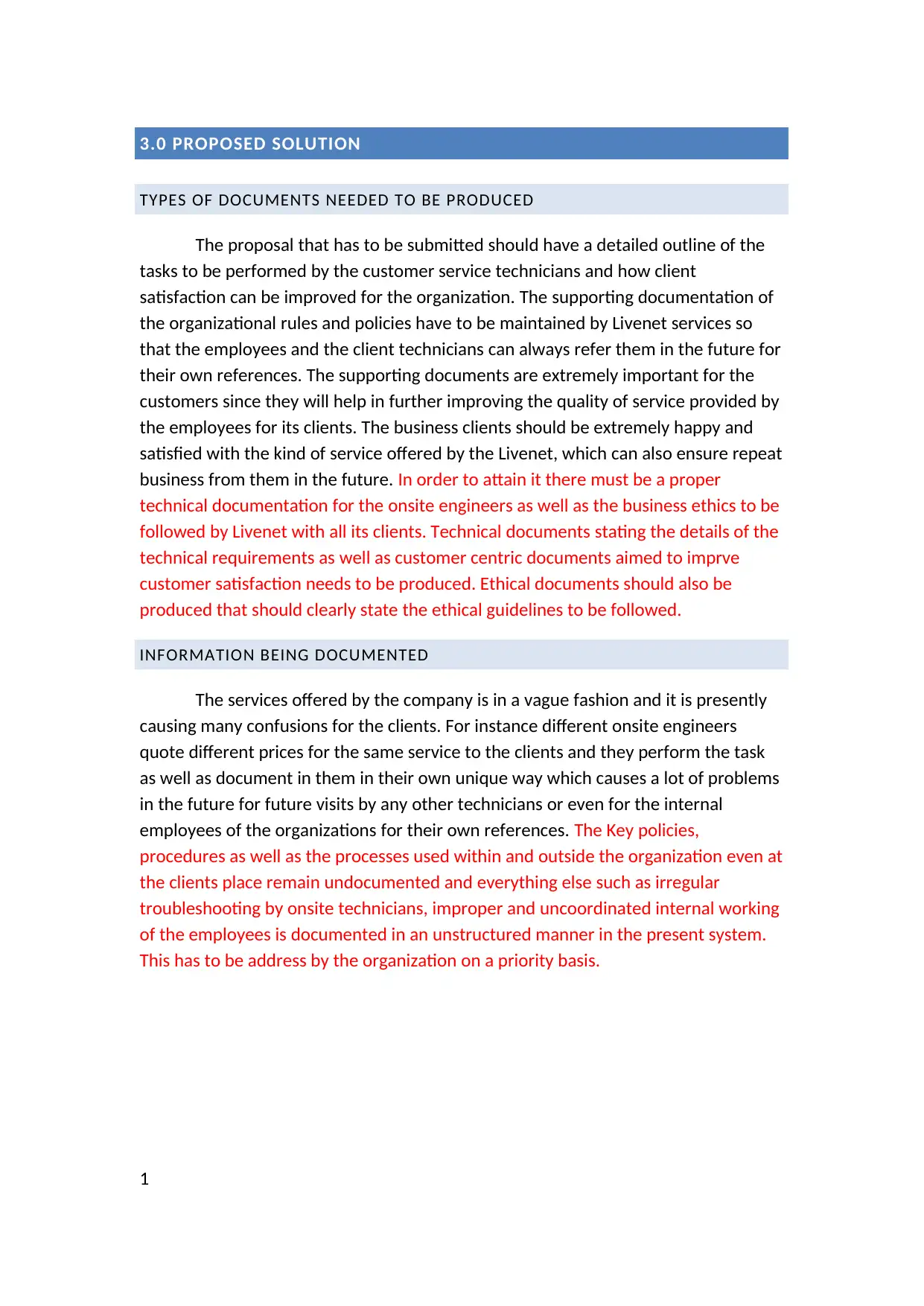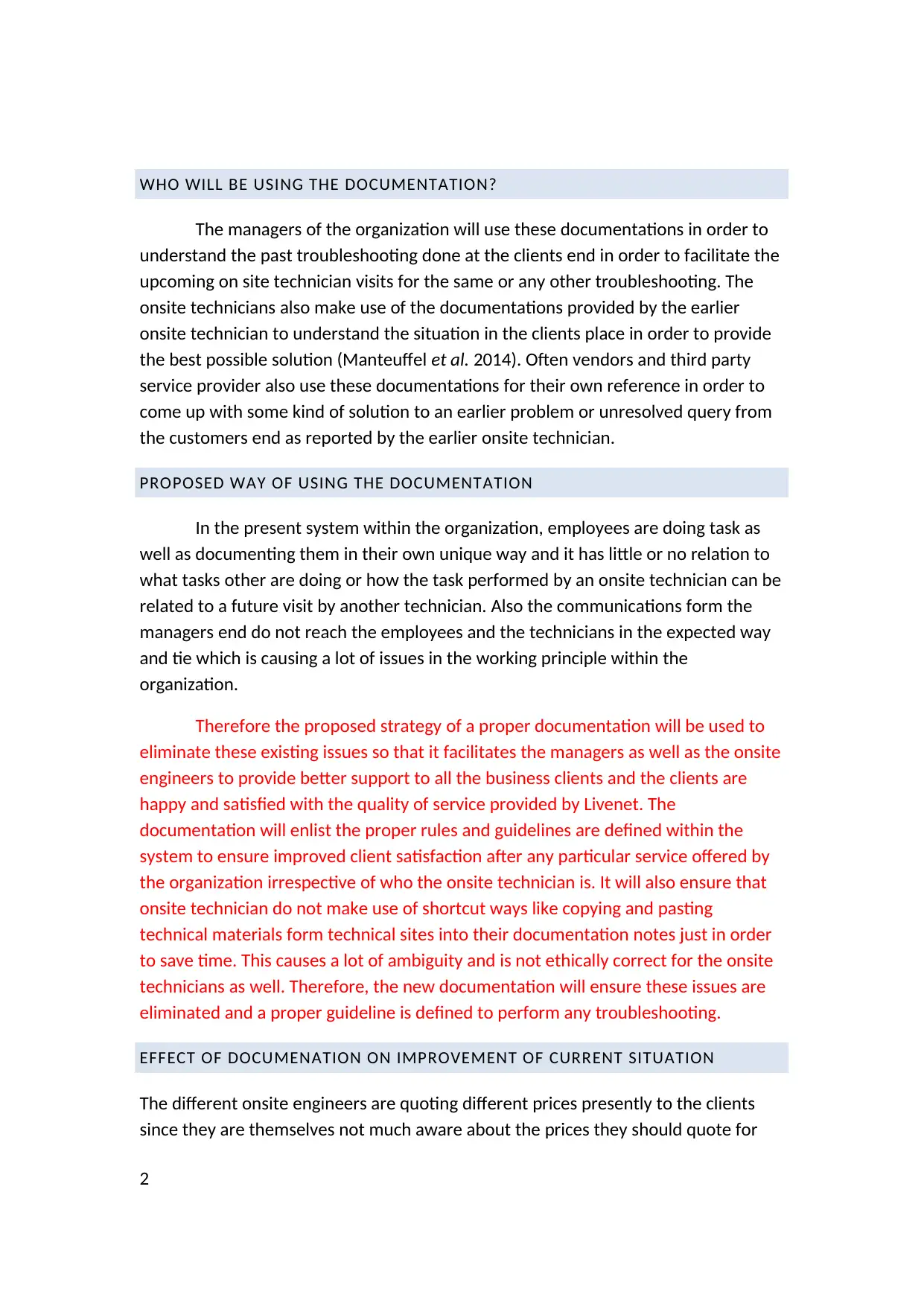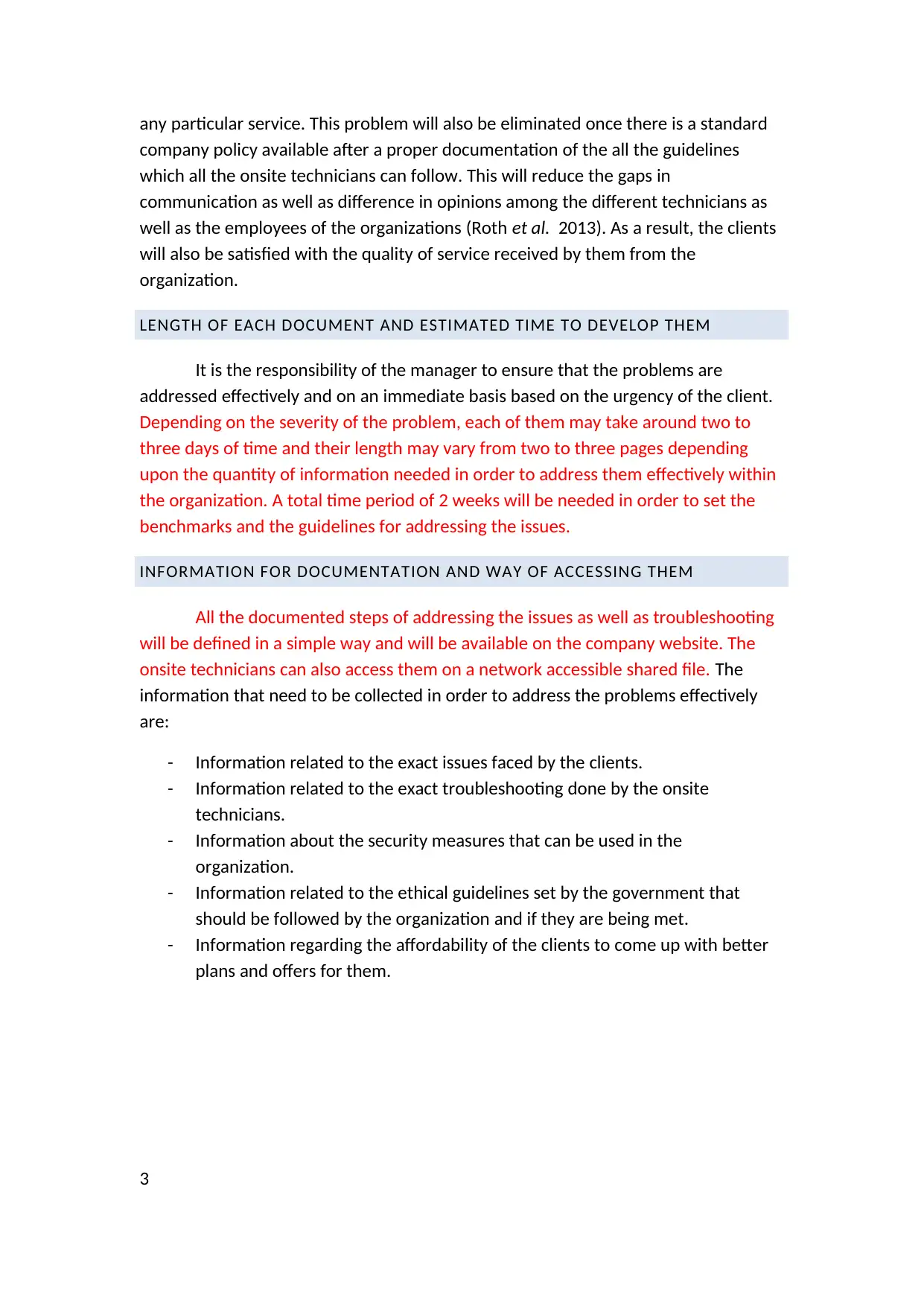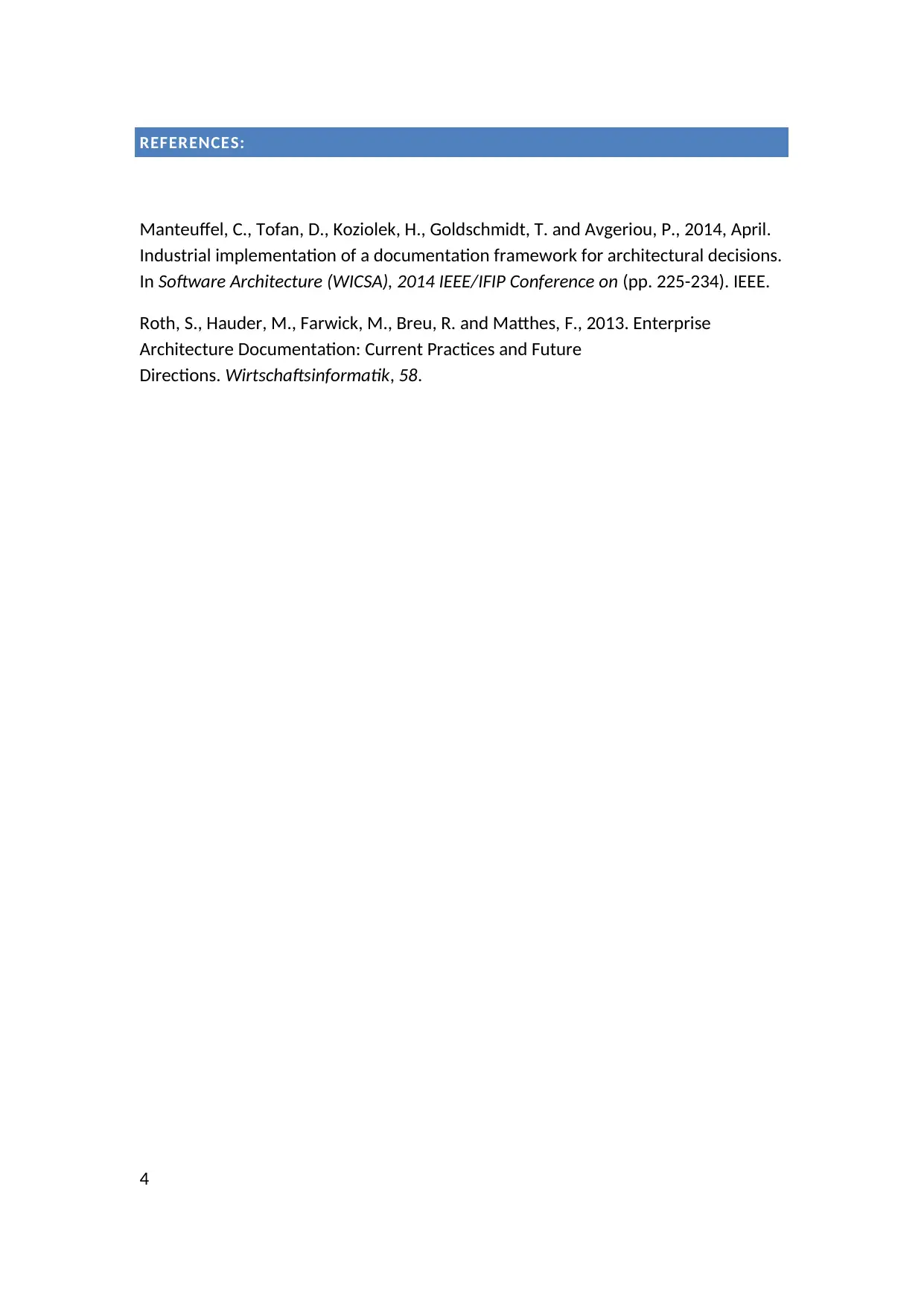Improving Client Satisfaction: A Documentation Proposal for Livenet
VerifiedAdded on 2023/05/30
|4
|1226
|213
Report
AI Summary
This report outlines a proposed documentation strategy for Livenet Services, aimed at improving client satisfaction and addressing current operational inefficiencies. The proposal emphasizes the need for detailed technical documentation for onsite engineers, clear ethical guidelines, and customer-centric documents. It identifies issues such as inconsistent pricing, undocumented procedures, and unstructured data management. The documentation will be used by managers, onsite technicians, and third-party vendors to facilitate better troubleshooting and service delivery. The proposed strategy includes defining rules and guidelines to ensure consistent service quality, eliminating unethical practices like copying technical materials, and establishing standard company policies for pricing. The documentation will be accessible on the company website and a shared network file, with a development time of approximately two weeks. Key information to be documented includes client issues, troubleshooting steps, security measures, ethical guidelines, and client affordability to improve service offerings. Desklib offers a wide range of study resources, including past papers and solved assignments, to support students in their academic endeavors.
1 out of 4




